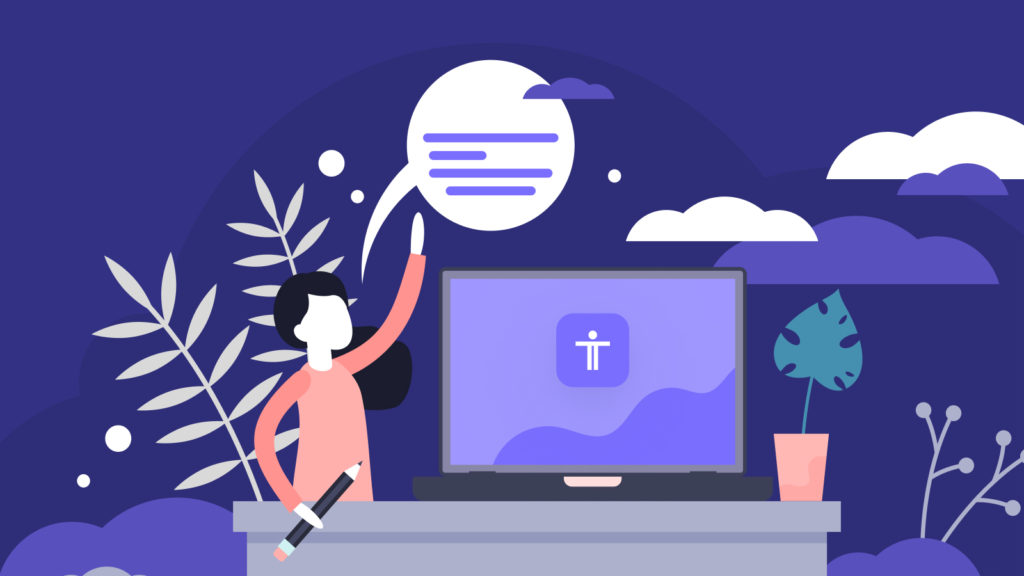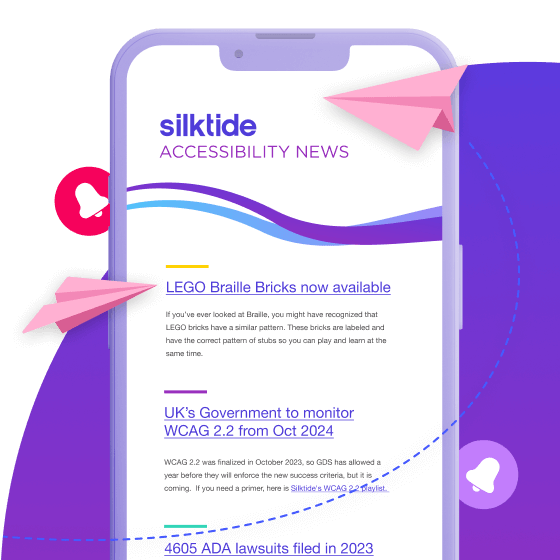Accessibility benefits everyone and I’ve committed to learning how to embed it into the digital projects I work on. Here’s how I’ve been getting started.
As a web UX manager, I brief, project-manage, test and sign off digital development. All members of a digital team should be responsible for ensuring that what they produce works for everyone. Content creators, researchers, designers, developers and testers all have a part to play.
When you’re new to digital accessibility it can get very complicated, very fast. There is plenty of material available to support your learning, but a lot of it can be theoretical and difficult to digest. It can feel overwhelming to know where to start.
Personally, I’ve found that inclusive design is one of those areas where the more I learn, the more I realize I don’t know. I’ve had to challenge myself and recognize when the way I’d been thinking about accessibility had been well-intentioned, but ultimately missing the point.
As a non-disabled person, I need to be prepared to be wrong, to avoid reducing disability to a static monolith and to resist advocating on behalf of users in the absence of involving them.
Accessibility is often reduced to checklists, compliance, and legislation but it should be focused on people and improving their online experience.
I’ve become absorbed in learning about the ways that websites/apps can be disabling to users and how digital design & development can be intentionally more inclusive.
These are some things that I’ve found useful so far:
Reading, listening, and watching
I’ve had been readily receiving recommendations and have found these very helpful:
- Introduction to Web Accessibility by Michele A. Williams – a great 15 min baseline on designing, coding, and testing with users with disabilities in mind.
- There’s no such thing as a website or web app that doesn’t need to be accessible blog by Chris Ferdinandi – a snappy & impactful rebuffal of some common misconceptions around accessibility.
- The state of accessibility with Derek Featherstone – this gives a brilliant context within teams & organizations and how accessibility is an outcome but inclusive design is a process.
- Productivity recreates disability by Liz Jackson – I was fortunate enough to see Liz’s inspiring talk at the New Adventures conference in January 2020 and have re-watched it since. Liz highlights the limits of empathy and challenges the dynamic of disabled people as recipients rather than drivers of design.
Online learning
Some online, on-demand courses I’ve taken are:
- Udacity: Web Accessibility by Google, Developing with Empathy – a free 6-lesson foundation covering focus, how to ensure what you see on the page is matched in semantically-designed HTML/CSS, navigating content, how ARIA (Accessible Rich Internet Applications) can be used as an enhancement.
- W3Cx: Introduction to Web Accessibility – a free 5 module introduction, which is less technical and more holistic than the Udacity course.
It gives a thorough overview of: how accessibility impacts people; assistive technologies and adaptive strategies; the Web Content Accessibility Guidelines (WCAG) principles of Perceivable, Operable, Understandable, and Robust. It also gives practical guidance around building a business case and getting started with accessibility in your organization.
During these courses, I’ve been collating a document, to record and organize my accessibility notes. Knowing that I’m unlikely to retain all the lessons in front-of-mind, this will act as a reference so I know where to look in the future.
Getting hands-on
- Exploring accessibility settings and testing different websites: Technology brands such as Apple and Google are at the forefront of creating inclusive technology and offering in-built accessibility settings in their products.
Experimenting with different settings has helped me to understand how these settings can enhance UX. I’ve also been trying websites and apps using my keyboard, the screen reader NVDA, and the in-built voiceover on my phone.
- 48in48 project: I took part in the first Women’s Build Event to create 48 websites for not-for-profit organizations in one weekend. As part of the a11y (accessibility) team, we ran through a review of each site against key WCAG areas.
- Working with automation and testing tools: My team at The Access Group has recently invested in Silktide and we’ll be using the accessibility features to identify and prioritize fixes, based on how frequent or widespread the issue is, how much of a barrier it may cause for users and the effort required to fix.
It has reinforced that embedding accessibility into design & development from the outset is far more efficient and considers the UX as well as meeting WCAG requirements.
Connecting with others
I’ve also been connecting with other digital practitioners who approach their work in an inclusive way. Speaking to people that are further on than I am and hearing about their experiences has been really valuable.
From each of these conversations, I’ve come away with a new perspective on the reality of embedding accessibility into an organization and recommendations for further learning.
I’ve also been finding like-minded colleagues to start to understand how accessibility is approached in other areas of the business, like product development and HR.
The glaring omission in my learning so far, thanks to being in lockdown, has been speaking to disabled people in person about their experience of the web. Some of the most useful lessons during my online learning have been hearing directly from people about common frustrations and how they use adaptive strategies and assistive technologies.
My intention is that my learning, questioning, and conversations will be ongoing, and crucially, create a foundation for action.
I’m also conscious that as a non-disabled person who has only experienced situational impairments when using technology, I need to resist the traps of seeing accessibility as a checklist or something that needs to be fixed, rather than a commitment to an inclusive mindset that benefits everyone.
If you have any thoughts, are going through similar learning, or equally, would like to challenge anything in this post, you can find me on LinkedIn.

